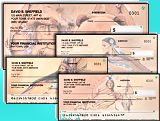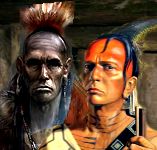 |
|
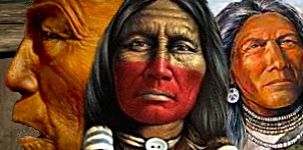 |
|||
 |
 |
 |
 |
||
|
|
|||||
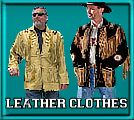     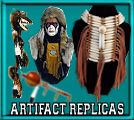 |
Oconostota (ca. 1710-1783) was the Warrior of Chota and the war chief of the Cherokee Nation from 1775 to 1780. |
Artifact Replicas|Jewelry|Clothing|Figurines|Art Prints|On Sale|Closeouts
Custom Search
What's New Oconostota, the Warrior of Chota Cunne Shote, also known as Oconostota, painted by Francis Parsons in 1762. This might also be a painting of his uncle Standing Turkey. (See notes below.) NATIVE NAME: Aganstata ENGLISH NAME: James BEAVER Jr ALTERNATE NAMES: Oconostota, Oconastota Moytoy, Cunne Shote, Warrior of Chota, Stalking Turkey (a name which causes confusion with his uncle Kanagatucko, who was known as "Standing Turkey"), Groundhog Sausage, Beloved Warrior, First Warrior, Great Warrior, Skiagunsta Chote ALTERNATE SPELLINGS: Oconastota, Oconostata, Oganatoga, Shote is a variant of Chote or Choat or Choate, Cumnacatogue MEANING OF NAMES:
DEATH DATE / LOCATION: Oconostota is believed to have died in either 1782 or 1783 at Chota. BURIAL PLACE: Oconostota's remains were uncovered during the archaeological digs around the site of Chota for the Tellico Reservoir impoundment. His burial site was at the front door of the Chota Council House. This was a high honor that indicated he was regarded as being above the stature of most Cherokee leaders. The members of the Council would have to walk over his grave to enter the structure and remember his contributions to the Chota village. Oconostota was identified by a pair of reading glasses that he owned which were buried with him. He had been buried in his canoe. Oconostota was re-interred at Chota in the portion raised by TVA (which includes the site of the council house) and has a gravestone marking the site. His name is given as Oconastota (with two a's) on his grave marker near the original site of Chota in Monroe County, Tennessee. The columns of the Chota Council House and his grave were placed back in their original positions, then concrete was poured over them to prevent looting of the site. It is now under the dominion of the Eastern Band of the Cherokee Indian and overseen by the Sequoyah Birthplace Museum in Vonore. The site is still used in ceremonies by the Cherokee and regarded as the most sacred site of the Cherokee Nation. It is located south of the Sequoyah Birthplace Museum and Fort Loudoun State Park on the same stretch of road. MOTHER: Aganunitsi, was one of the daughters of Chief Amatoya Moytoy (b. about 1640) and Quatsy of Tellico.She was an elder sister of Chief Old Hop. FATHER: Moytoy Pigeon of Tellico (Moytoy II), also known as Smallpox Conjuror of Settico SIBLINGS: One of eleven children.
1st WIFE: Creek Woman, also known as Aniwaya Woman of the Paint Clan. She was 1/2 Shawnee, born about 1704. They married about 1720. CHILDREN WITH 1ST WIFE:
CHILDREN WITH WIFE #2:
CHILDREN WITH WIFE #3:
CHILDREN WITH WIFE #4:
SIGNIFICANT POSITIONS: War Chief of the Cherokee Nation from 1775 to 1780. MISCELLANEOUS HISTORY: Oconostota was 1/2 Shawnee, but was raised and lived in his mother's Cherokee culture. Oconostota is believed to be the Native American on the central emblem of the flag of Nashville, Tennessee. In 1730, Oconostota was one of six Cherokee delegates who visited England. It was there that he first met one of his future wives, Lucy Ward, who was a lady-in-waiting to the Queen. He made a return trip with two other Cherokee in 1762 to meet King George III. The painting pictured above was of him in his court attire on that visit, which did not go well. Although he had been schooled in the proper protocols when meeting British royalty, he greeted the King with the customary Cherokee hug, which shocked the court, and he was shunned by British society. Oconostota became the Principal Chief of the Cherokee following the death of his cousin Attacullaculla, sometime around 1775-1777. He was suceeded by Rayetayah (Hanging Maw), who married a granddaughter of Moytoy I (and sister of Attacullculla). By the time of the American Revolution, Oconostota was a great chief in his tribe, who had great influence with other allied tribes, as well. Hollywood and other fictitious portrayals of Native American leadership have always illustrated chiefs as being hereditary "kings" of their tribes. This, especially among the Cherokee, is a myth that has been perpetuated throughout the years. A Native Americanís abilities in war, trade, and diplomacy brought them influence and the right to serve as a consultant to the tribal council. The power of these political structures was found in an individualís ability to influence others. Once such a position was attained, it had to be held and proven over and over. Oconostota in any European context would be likened to a famous general. His ability to respond quickly to threats and his fearless courage in battle made him a natural leader among the Cherokee and other southeastern tribes. There were many contemporary descriptions of him in British and French writings of the day and even President George Washington wrote of him and the problems he could pose to American security. As the Anglo-American crisis escalated, Oconostota struggled to avoid open warfare with the Americans. Younger chiefs of the Cherokee tribe, however, angered at continued pressure on their lands, urged warfare, and the American Revolution gave them an opportunity. While Oconostota continually applied to Virginia and Continental officials to negotiate, his people, led by the younger chiefs, were defeated again and again. Oconostota sided with the English in the war with France, but afterward, exasperated by an attack on a party of his men by settlers, who accused them of horse-stealing, he gathered an alliance of 10,000 Creeks and Cherokees. They massacred the commander of Fort Prince George, and soon reduced Fort Loudon to the alternative of surrender or starvation. Being allowed to retain their arms and promised safe conduct to Virginia, the garrison of two hundred surrendered, but was treacherously attacked at the close of the first day's march, and all but Captain John Stuart, Isaac Thomas, a scout, and a soldier named Jack, were killed. Oconostota told Stuart to work the captured guns, with which he proposed to reduce Fort Prince George, and, on his refusal, threatened to burn him at the stake. Attakullakulla intervened and escorted him to Virginia. The English then destroyed the Cherokee towns, and reduced the nation to the last extremities. Peace was finally granted them only on the intercession of Attakullakulla. Oconostota had learned how to efficiently use a rifle early in life and was regarded as an exceptional marksmen among his people. In addition, he was a clever tactician and strategist and knew what it took to win on the battlefield. Whether it was fighting other tribes or European traders, he understood their weaknesses and strengths and knew how to stage a battle to win. His quick mind and wise decisions soon earned him recognition in the tribe as one of its greatest warriors. While he did not have the diplomatic and oratory skills of his colleague Attakullakulla, Oconostota did have the natural skills of battlefield leadership and that was the catalyst that caused him to rise to prominence in the Cherokee Nation. In 1770 a handful of pioneers, under James Robertson, crossed the Alleghanies and settled upon the Cherokee territory at Watauga. Oconostota granted them an eight year lease, but in March, 1775, they demanded an absolute cession of the territory. At the treaty council, Oconostota opposed this in an eloquent speech in which he predicted the fate of his nation. His speech was so impassioned that the other indian leaders got up and left the negotiations. However, then the negotiators prepared a great feast and invited the Indians, getting them drunk on rum in the process. Eventually the council reconvened and Oconostota was overruled by the other leaders. The cession of the Watauga lands was made, and also of the Cherokee claim to all of Kentucky. When Oconostota had signed the treaties he turned to Daniel Boone, who had been active in the negotiations, and said to him: "Young man, we have sold you a fine territory, but I fear you will have some blood spilled getting it settled." In a little more than a month the battles of Lexington and Concord were fought. John Stuart, who had been appointed British superintendent of the southern Indians, at once conceived a gigantic scheme for crushing the southern colonies by a combined front and rear attack. A British land and naval force was to descend upon the seaboard, while Oconostota, at the head of 20,000 combined Choctaws, Chickasaws, Creeks, and Cherokees, should attack the back settlements. A year of time and millions of dollars were expended in the preparation, and in July, 1776, the execution of the plan was attempted. Sir Peter Parker descended upon Charleston, but was beaten off, and a like fate befell the scattered rear attacks, Oconostota himself being driven back by John Sevier with only forty men. A five years' struggle followed, during which Sevier, with at first only 200 men and with never more than 1,000, inflicted defeat after defeat upon the old king and his 10,000 warriors. At last the nation dethroned Oconostota and elected in his place the peace-loving Rayetayah. This broke the spirit of the old monarch, and he sought oblivion in alcohol. For nearly thirty more years he is known to have wandered about, a homeless, weak, besotted, and despised old man, begging a meal or a gallon of whiskey from the "white brother" he so intensely hated. The last recorded account of Oconostota, before his bones were dug up, is in the letters of Return J. Meigs, United States agent among the Cherokees. He writes in 1809 that his study of the classics was often interrupted by the intrusion into his tent of the "greasy old Oconostota," who would wail for hours over his departed greatness. 
Native American Chiefs Art Print 24 in. x 36 in. Buy at AllPosters.com Framed Mounted |
|
|||||||||||||||||||||||||||||||||||||||||||||||||||||||||||||||||||||||||||||||||||||||||||||||||||||||||||||||
| |||||||||||||||||||||||||||||||||||||||||||||||||||||||||||||||||||||||||||||||||||||||||||||||||||||||||||||||||
Site Designed by: Mazaska Web Design
Hosted by: HostIt4You.com
© 1999-2008 AAANativeArts.com
+0
file: Oconostota

